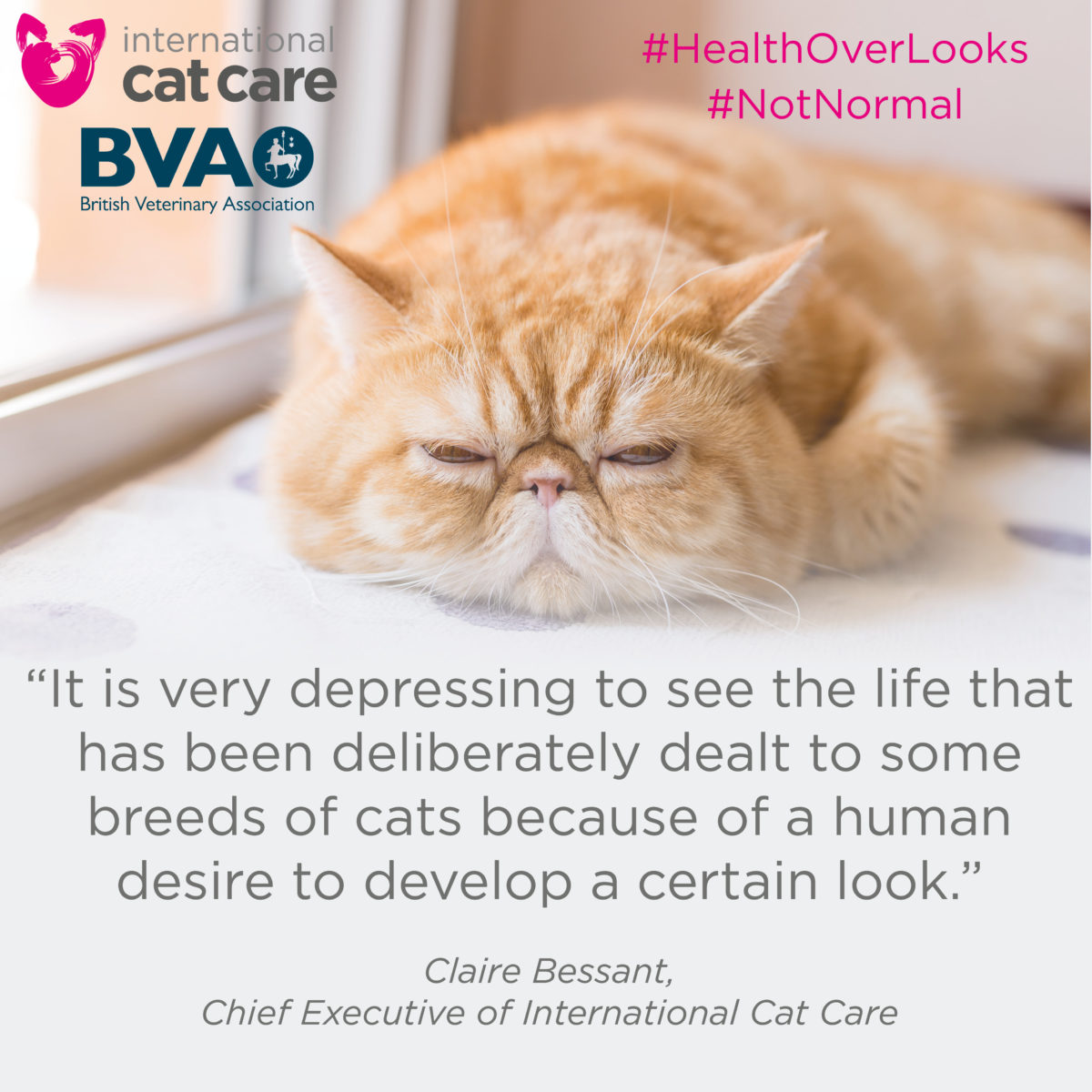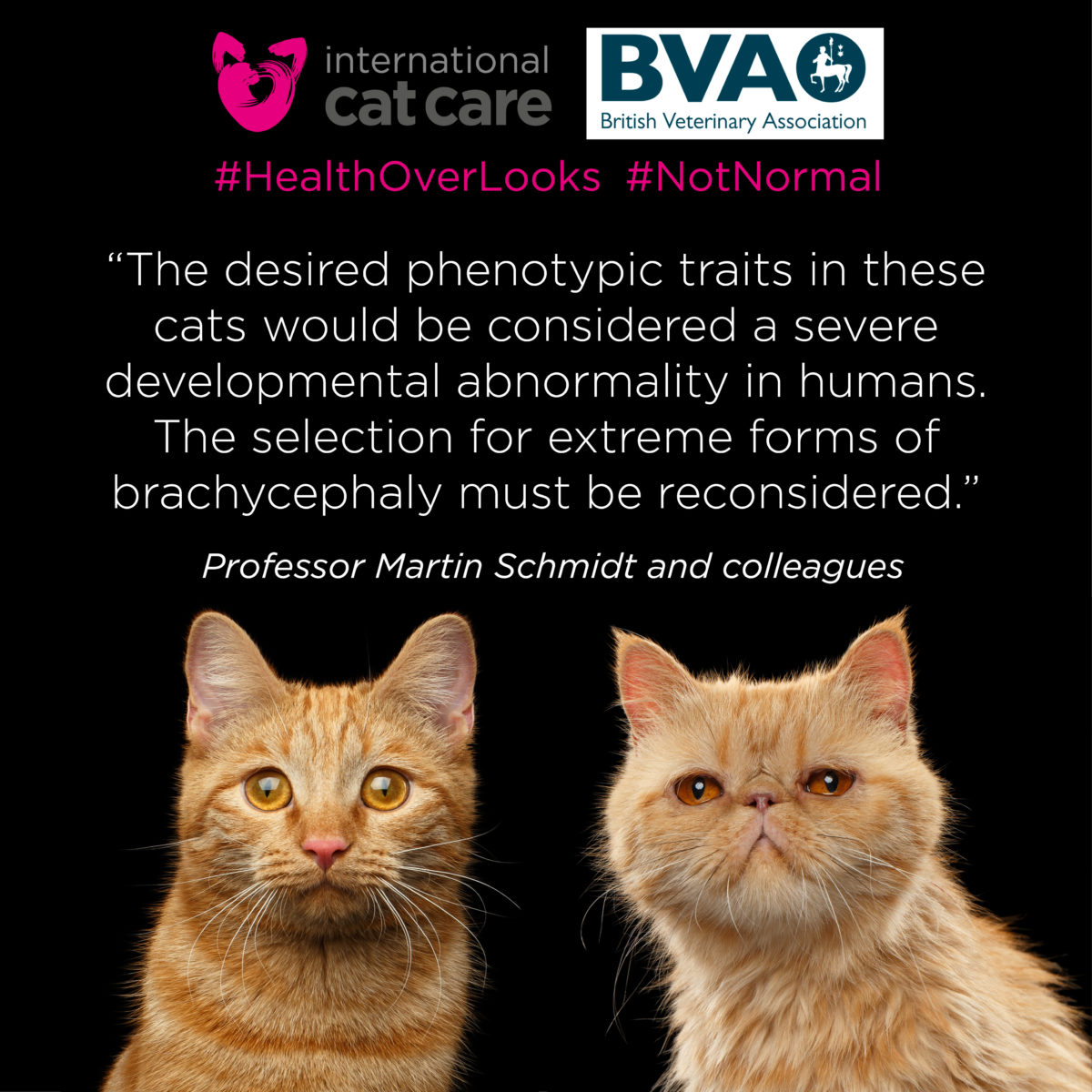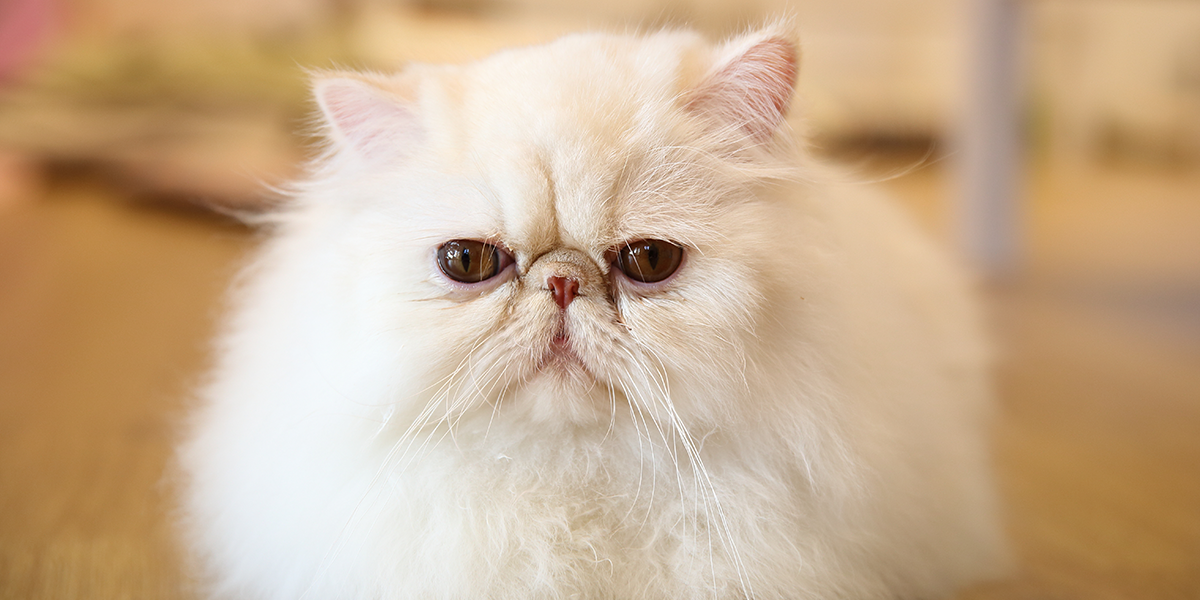There has been a trend over many years to breed Persian cats, and some related breeds such as the Exotic Shorthaur, with a greater and greater degree of brachycephalic (short nose).

A flat-faced Exotic Shorthair compared to a Domestic Shorthair
For inexplicable reasons, this has been seen to be desirable among many breeders and show judges. Many Persian (and related cats) are now bred with extremely malformed heads having exceptionally short and flattened/squashed noses, with large eyes.
This selective breeding has been highly detrimental to the health of the cats. Many different problems have been identified that have arisen directly from this selective breeding. These include:
- Large protruding eyes with reduced ability to close the eyelids resulting in increased exposure of the cornea. This contributes to exposure keratitis and probably contributes to corneal sequestrum development (to which Persians are predisposed)
- Persistent epiphora (ocular discharge) – this occurs because the tear ducts which would normally drain tears into the nose (tears are constantly produced to help protect the eye) have become so deformed with the change of facial shape that it is impossible for tears to drain properly
- Dental disease – the abnormalities of the skull mean that not only is the nose extremely short, the jaws and teeth are affected as well. The teeth no longer align properly in short-nosed Persian cats so they cannot bite and chew properly, predisposing to dental disease
- Studies have shown that the degree of brachycephalic is also related to small pelvis size in Persian cats which will contribute to dystocia (difficulty giving birth)
- Severe brachycephalic also causes excessive skin folds on the face – this may predispose to bacterial or fungal skin infections, and may also contribute to the development of idiopathic facial dermatitis in Persians (see Feline acne and stud tail)
- Brachycephalic airway syndrome is common in these cats – this is where affected cats have difficulty breathing due to a very narrow external opening of the nose (stenotic nares), narrow nasal passages or nasopharynx, and/or due to a relatively long soft palate – in some cases the breathing difficulties can be severe
All of these consequences from breeding cats with marked brachycephalic are clearly very detrimental to the health and welfare of the cat.
International Cat Care believe that it is unethical to deliberately breed cats with such malformed skulls that the health of the cat suffers. We believe breeders, breed clubs and associations and cat show judges all have an overriding responsibility to ensure the cats that are bred are as healthy as possible. As such, severely brachycephalic cats should not be bred from and every attempt should be made to breed cats with a conformation that is not detrimental to their health.
International Cat Care has teamed up with the British Veterinary Association (BVA) to raise awareness on the suffering of very flat-faced breeds.




Click on the links below to read our articles on the scientific research providing evidence that these cats are suffering:
Mounting evidence to prove that flat-faced cat breeds are suffering
Research on the suffering of extremely flat-faced cats.
Thank you for visiting our website, we hope you have found our information useful.
All our advice is freely accessible to everyone, wherever you are in the world. However, as a charity, we need your support to enable us to keep delivering high quality and up to date information for everyone. Please consider making a contribution, big or small, to keep our content free, accurate and relevant.
Support International Cat Care from as little £3
Thank you.
Donate Now


